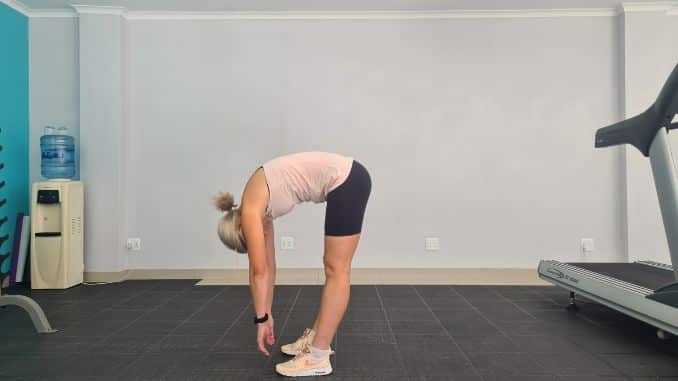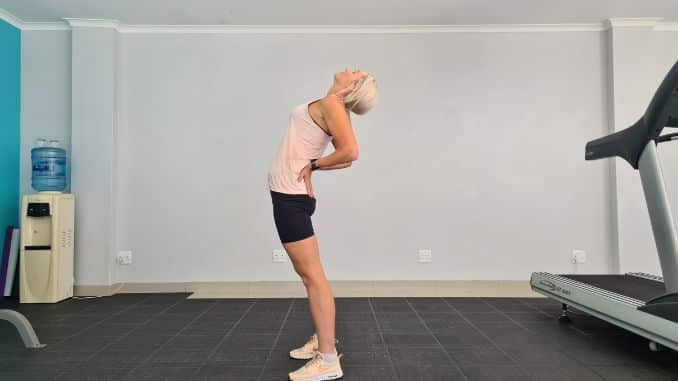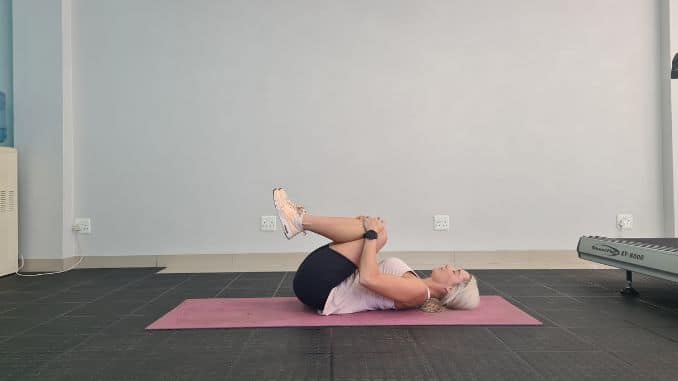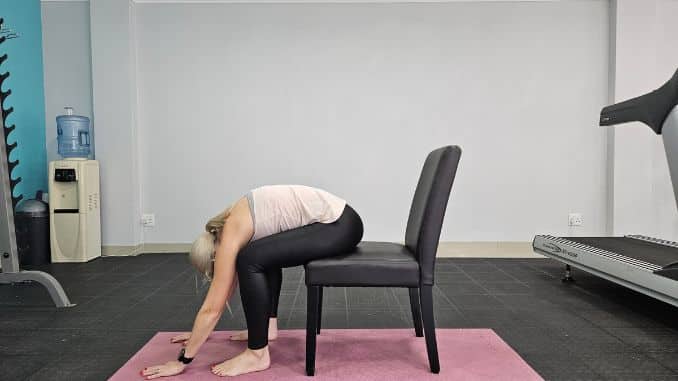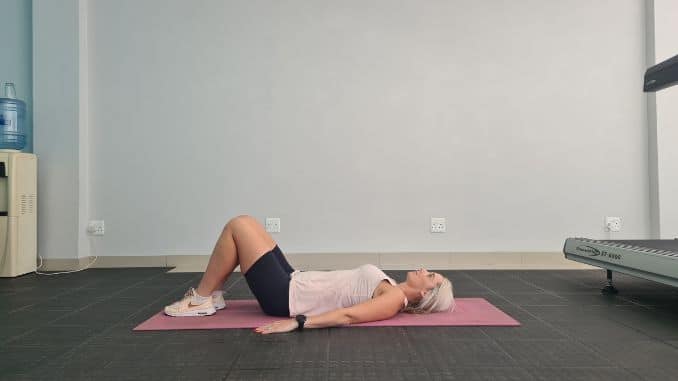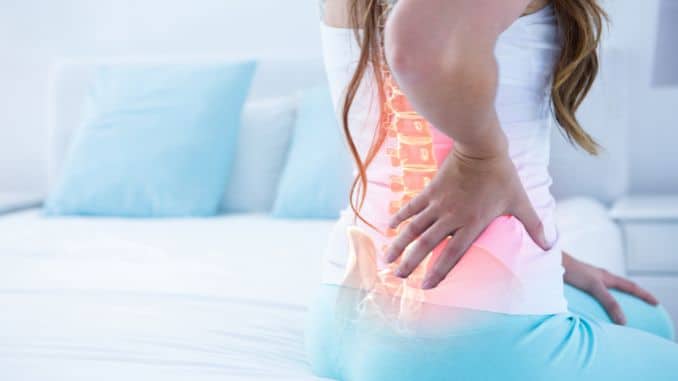
Overview
If one or more spaces in the spine become narrow and create pressure on the spinal cord and nerve roots, spinal stenosis occurs. The spinal cord is a bundle of nerves that comes out of the base of the brain and runs down the center of the spine. The nerve roots branch out from the cord. So continue reading to know the helpful spinal stenosis exercises.
Occurrence
The narrowing usually occurs over time and involves one or more areas of the spine:
- The spinal canal is the hollow space in the center of each vertebra (bones in the spine that protect the spinal cord); the spinal cord and nerve roots run through the spinal canal.
- The canals at the base or roots of nerves branch out from the spinal cord.
- The openings between vertebrae, through which nerves leave the spine and go to other parts of the body.
And it mostly common to occur in 2 areas:
- Lower back (lumbar canal stenosis).
- Neck (cervical spinal stenosis).
Who are at Risk
- Men and women over 50
- People born with narrow spinal canal
- Scoliosis
- Injury to the spine
Causes
There are so many causes of spinal stenosis, and these causes share in common as they change the spine’s structure, which narrows the spaces around the spinal cord and nerve roots that exit through the spine. Causes include the following:
- Bone overgrowth
- Bulging discs/herniated disc
- Thickened ligaments
- Spinal fractures and injuries
- Congenital spinal stenosis
- Spinal cord cysts or tumors
Symptoms
Symptoms may or may not occur, and then this will vary from person to person that may just come and go. Although spinal stenosis can happen anywhere along the spinal column, however, the lower back (number one most common area) and neck are common areas.
Spinal Stenosis in the Lower Back Symptoms
- Pain in the lower back.
- Burning pain or ache radiates down the buttocks and into the legs that typically worsens with standing or walking and gets better with leaning forward (flexion).
- Numbness, tingling, or cramping in the legs and feet. These may become more pronounced during standing and walking.
- Weakness in the legs and feet.
Spinal Stenosis in the Neck (Cervical) Symptoms
- Neck pain.
- Numbness or tingling in the arm, hand, leg, or foot. (Symptoms can be felt anywhere below the point of the nerve compression.)
- Weakness or clumsiness in the arm, hand, leg, or foot.
- Problems with balance.
- Loss of function in hands, like having problems writing or buttoning shirts.
- Loss of bladder or bowel control (in severe cases).
Treatment for Spinal Stenosis
The treatment for spinal stenosis depends on the root cause and severity of your symptoms. For milder symptoms, home care remedies are advised. But if these don’t work and as symptoms worsen, physical therapy, medication, and surgery are recommended.
Home-care Remedies for Spinal Stenosis:
- Heat – applying heat usually is the better choice for pain due to osteoarthritis. Heat increases blood flow, which relaxes muscles and relieves aching joints. Additionally, use heat with caution – don’t set the settings too high so you don’t get burned.
- Cold – applying ice reduces swelling, tenderness, and inflammation. And if heat isn’t easing your symptoms, ice is a good alternative (an ice pack, frozen gel pack, or frozen bag of peas or corn). Typically ice is applied 20 minutes on and 20 minutes off.
- Exercise – exercise helps relieve pain, strengthening muscles to support your spine and improving your flexibility and balance. But before you engage in any exercise routine, check with your healthcare provider first.
Spinal Stenosis Exercises
Standing Lumbar Flexion
A great exercise to treat spinal stenosis.
To do the exercise:
- Stand with your feet apart
- Slowly bend yourself forward, reaching towards the floor.
- When you are fully bent for 2 to 3 seconds, then slowly return to the upright standing position.
Meanwhile, the spinal stenosis exercises program should focus on changing the spine’s position to help take pressure off spinal nerves. This can decrease or abolish pain and improve the ability to walk without pain.
Spinal Stenosis Stretches that may help:
Sustained Lumbar Extension
To perform the exercise:
- Stand with your feet shoulder-width apart, support your back, and then bend backward.
- Hold the position for about 60 seconds. (This position may cause an increase in your back pain and leg pain or tingling. Moreover, in some people, the symptoms subside within 60 seconds. And if that happens, add the exercise to your lumbar spinal stenosis home program.)
**If sustained lumbar extension causes an increase in symptoms that does not decrease in 60 seconds or so, then it is not for you and should be eliminated from your home exercise program.
Supine Lumbar Flexion
To start your spinal stenosis lumbar flexion exercise progression, perform the flexion in lying exercise.
To do this:
- Lie on your back with your knees bent.
- Slowly bring your knees up to your chest, and grab onto them with your hands.
- Hold this balled-up position for 2 seconds, and then release your knees back to the starting position.
- Perform lumbar flexion in lying for 10 repetitions, and then move on to the next exercise.
Sitting Lumbar Flexion
Once the lumbar flexion in the supine position has been completed, then it is time to perform the bending exercise for stenosis in a seated position.
To perform:
- Sit in a firm chair with both feet on the floor.
- Slowly bend yourself forward and reach toward the floor.
- Hold the fully bent position for 2 seconds.
- If you need to add more overpressure, grasp your ankles and give a gentle tug.
- After holding the position for 2 seconds, release and return to the full, upright seated position.
- Repeat the seated lumbar flexion exercise for 10 repetitions, and then move on to the next exercise.
Pelvic Tilt
Core strengthening helps improve how muscles support the spine, and people with spinal stenosis may benefit from these exercises. Moreover, the posterior pelvic tilt is a great exercise that works in the abdominal and hip muscles while flexing the spine.
To do the pelvic tilt:
- Lie on your back with your knees bent.
- Slowly roll your pelvis backward as if you were flattening out your spine.
- Hold this position for 3 seconds, and then slowly return to the starting position.
- Repeat 10 times.
Clearly, exercise should be the main focus to treat the symptoms and prevent the progression of spinal stenosis. Visit or call the physical therapist to learn exercises specific to the condition and to start the lumbar spinal stenosis home exercise program right away.
Activities to be Avoided
While exercise is the main tool to treat the symptoms and prevent the progression of spinal stenosis, some activities should be avoided because it worsens the condition. These include the following:
- Running
- Extended walks
- Contact sports
- Jumping
- Climbing
- Deep back stretches
- Cycling
Takeaway
To conclude, spinal stenosis develops slowly over time, and symptoms may not be present in the early stages. There are a lot of treatments available to prevent the progression. But if it worsens and already affects the quality of your life, it would be best to talk to your doctor.

